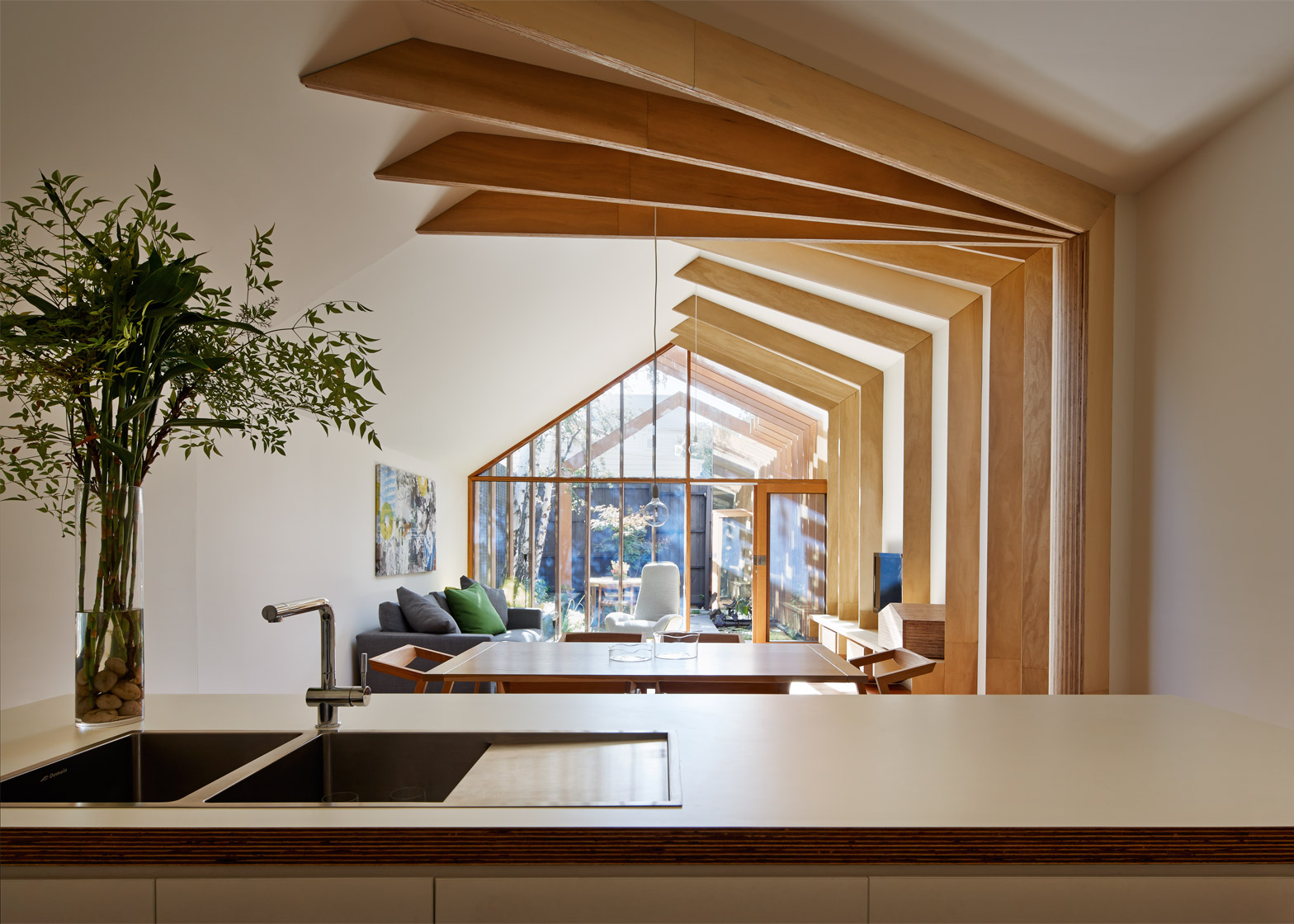FMD Architects used slender lengths of timber to "stitch" together this narrow Melbourne house and its new garden extension.
The project, called Cross-Stitch House, involved extending the single-storey residence to create new family living spaces, as well as improving natural light in the existing rooms.
The brief given to Melbourne-based FMD Architects called for space to display three tapestries made by the client's mother. The architects used this as the starting point for their design.
"Our design strategy is always to celebrate the particularities of the project," explained the team, "so while exploring the tradition of tapestry and stitching techniques, the concept of stitching the new form to the old established the design approach."
Wooden columns and beams are installed along one side of the building, framing both the wall and the pitch of the roof. The result is a series of linear protrusions intended to look like stitches.
At the junction between the house and the extension, these wooden elements splay out around a column and create the framework for a skylight.
At the other end, they extend out into the garden to enclose a patio and a small pool – similar to another Melbourne extension by architect Andrew Maynard, and one in Spain by architect duo Anna and Eugeni Bach.
Some of the beams fold back to create louvres across the glazed end wall, and one creates an arch at the rear entrance to the site.
"The timber beams form the thread that stitches the living room to the existing house, then beyond to the western courtyard," said the architects. "The timber beams converge into a large timber column, reminiscent of a bobbin thread."
"Within the courtyard, a mirror is positioned strategically at the end of the threads to extend the space and create a sense of unravelling," they continued.
"The timber threads twist over the western facade to provide shading to the living area, which will soon be overgrown over by greenery."
The new living space created by the extension provides open-plan spaces for cooking, dining and lounging. The pool of water, located just outside, helps to naturally cool this room.
Wooden fittings were added throughout the space, matching the stitch elements. They include a kitchen counter with a triangular profile and a storage unit with angular drawers.
In the existing house, a generous lightwell was created to bring daylight into the master bedroom and bathroom. Wooden details in these rooms resonate with those in the living space.
"What was a damp, dark Victorian terrace has now become a series of spaces which have strong connections to the exterior, offering ever-changing natural light, and natural ventilation and cooling," added the firm.
Photography is by Peter Bennetts.
Project credits:
Project team: Fiona Dunin, Andrew Carija, Robert Kolak
Builder: Grenville Architectural Construction P/L
Structural engineer: Macleod Consulting P/L
Landscape architect: Eckersley Garden Architecture

